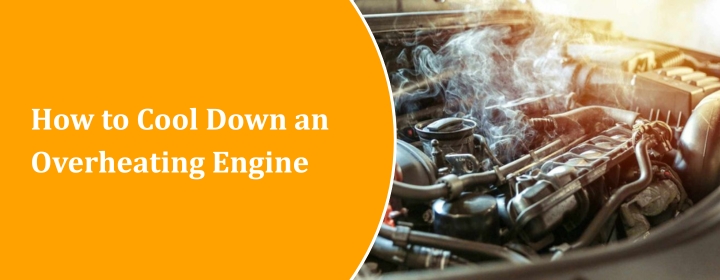
It is frustrating when the temperature gauge is rising, and you are in the middle of traffic. The steam begins to blow out of the car hood and before long, you are stopping with the hope that nothing blows. Overheating engine may occur to anybody even with a well maintained vehicle. but if overheating is persistently, then the engine may get permanently damaged, and you may have to deal in some used auto parts. because when the engine gets overheated, there are always some other parts that gets damaged as well.
No matter whether you are driving something old or you have fitted some used parts of the engine just now, you would save your engine a lot of serious damage by knowing the proper way to cool down.
Why Engines Overheat
Engines produce much heat each time they are used. It is the role of the cooling system to control that heat with the use of coolant, fans and radiator. However, a problem like a coolant leak or a failed thermostat, or even a defective weak water pump can increase the temperature.
Step 1: Turn the Engine Off
When that temperature pointer is at red color, condition of the engine is about to get messy. If you still continued to run your car, the engine may get cooked completely. Get to a safe place, switch off the engine and allow it to cool down to not less than 15-20 minutes. Do not keep the hood open there at the moment – the steam will give you burns.
Once the engine is cooled, open the hood with the purpose of releasing the heat even quicker. Simply don’t take off the radiator cap when it is hot. Wait till it has cooled down.
Step 2: Check the Coolant Level
After everything cools down then check the coolant reservoir. If its low or empty then it is probably the reason why it overheats. If oil levels continue to go down or you start seeing puddles beneath the car, then there is a leak for sure. The leak might be a hose, burst radiator or it may be a gasket that is old and worn.
The replacement of those parts is not necessarily that expensive, there are a multitude of sources of used auto parts that have good parts of the cooling system that will get you back in the road that is not going to empty your wallet.
Step 3: Inspection of Belts, Fans, and Hoses
There are times when it is not due to coolant. Overheating can also be a result of a broken belt or broken fan. Inspect the serpentine belt which operates the water pump- in case it is loose or broken the coolant will not circulate. Furthermore, ensure that radiator fan is activated once the engine opens.
When you have an older car, or where you have recently fitted used auto parts to the engine block, be sure that those connections are tight and the fan wiring should not be corroded.
Step 4: Start Cleaning and Monitor the Gauge
Having filled the coolant and made sure everything is fine, start the engine with the heater on its peak. It is strange, though the heater in fact draws away the heat in the engine. Upon the temperature gauge returning to normal it may be safe to drive home or to a local mechanic.
But should it scope back up or the more steam you can see, put it off at once. By this time it is safer to call out a tow than run the risk of a blown head gasket.
Step 5: Pay attention to the Aftermath
After the engine has been repaired, one should always take a look at the reason due to which it was overheated. You do not have to spend thousands to get the new engine, instead you can get a sound used engine, which is tested and inspected, and has a warranty.
Most of the online suppliers that are very trusted now supply used engines with warranty that is compression-tested and cleaned prior to shipping. To any person who has lost an engine due to overheating that is a peace of mind that you can afford indeed.
For such warrantied machines, you can check our vast inventory at carpartengine.com.
Reasons of Overheating
If you will keep your eye out for the symptoms given below, your vehicle wont overheat again. out for these symptoms you can The most prevalent reasons include the following:
- Broken thermostat
- Faulty radiator fan or relay
- Clogged radiator
- Broken hose or incompetent water pump
- Bad and old coolant mixture
Real Signs of Serious Damage
Even after refilling the coolant and inspecting the fans, in case your engine is still overheating, something more profound could be off. Watch out for these signs:
- Exhaust smoke or steam is white.
- Milky oil
- Loss of power or rough idle
- Centrally located coolant smell
Final Thoughts
You should now understand the reasons engines overheat, the precautions to take, and the importance of the cooling system and engine oil. Always make sure that the engine is not running dry or without a properly working cooling system.
Because otherwise you may have to deal with a faulty engine, and may have to buy used auto parts. When an engine overheats, it always damages or warps some other part as well. And if you are need of quality used auto parts then carenginepart.com is one stop shop for you. We are dealing in used auto parts for over a decade now. Visit us at the link given above.